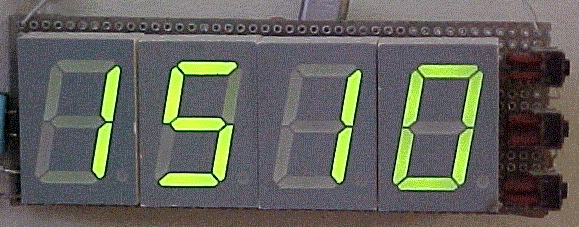
The purpose of this project is to design and build a device that will optically scan a 7-segment display and verbally identify the number scanned. The device should be small, lightweight, portable and be able to work on any 7-segment display. The numerical recognition is limited to the digits 0 - 9, colon (:) and decimal point (.).

Figure 1: Four 7-Segment Displays, displaying one, five, one and zero.
A Linear CCD of appropriate size and resolution was needed. Large enough to be able to scan large displays, and detailed enough to handle smaller displays. For this purpose, a Texas Instruments TSL208R linear sensor array was selected.
Figure 2: TSL208R linear sensor array.
This device has a working length of 64mm, and contains 512 bits (approx 200dpi) which is satisfactory.
For the speech output, the ISD1420 speech chip from ISD was used. This allows the recording and playback of individually addressed sound samples (maximum of 20 seconds worth) through the attached loudspeaker.
Figure 3: ISD1420 Speech Chip Functional Circuit.
The platform used is the Mitsubishi M16C/62. C-Code was developed to perform the following functions in the device:
Figure 4: M16C/62 Development Board.
The operation of the device is simple. An activation button is pressed to indicate that scanning should commence, then the scanner array is dragged across the desired display from left to right. When scanning is complete, the speech chip plays the appropriate message, stating the number.
Figures 5-7: Scanning the number five.
The device can successfully scan and identify the number on a single, 7-segment display, with the scanner held flush against the display. From conducted trials, the number is successfully identified over 90% of the time if a reasonably clean, and straight sweep is accomplished. The speed in which the individual scans the digit makes little difference to the operation of the device. A scan sweep in an erratic, slow or swift speed will still identify correctly (swift within reason - not breakneck speeds!). The identified number is then spoken through the connected loudspeaker.
Figure 8: Current progress.